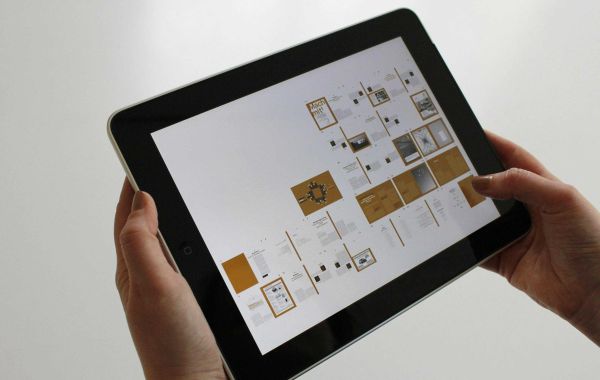Understanding the Psychology Behind User Interaction
In today's digital age, UI/UX design is not just about aesthetics; it is fundamentally rooted in understanding human behavior. The way users interact with digital products is influenced by psychological principles that shape their emotions, decisions, and reactions. For businesses seeking UI / UX Design Services in FL, it’s crucial to focus on these principles to create user experiences that are not only visually appealing but also intuitive, engaging, and effective. By delving into the psychology behind UI/UX, we can craft digital solutions that resonate with users on a deeper level, ensuring long-term success.
Cognitive Load and Information Processing
Cognitive load refers to the amount of mental effort required to process information. Users typically want to achieve their goals quickly and efficiently with minimal cognitive strain. A well-optimized UI/UX design reduces unnecessary complexity, enabling users to focus on their tasks rather than being overwhelmed by an overload of information.
Designers must carefully balance visual elements, text, and interaction cues to minimize cognitive load. Overly cluttered interfaces, irrelevant information, or too many choices can frustrate users and lead to abandonment.
Key Strategies to Reduce Cognitive Load:
- Chunking Information: Break down information into digestible chunks, allowing users to process it more easily.
- Consistent Layouts: Use familiar design patterns to reduce the learning curve and create a sense of predictability.
- Prioritize Content Hierarchy: Highlight important information through visual cues like size, color, and placement to guide users' attention.
The Impact of Gestalt Principles in UI/UX Design
Gestalt psychology is a theory that explains how people naturally organize visual elements into groups or unified wholes when certain principles are applied. These principles are key in UI/UX design as they directly affect how users perceive interfaces and make sense of visual information.
Principle of Proximity
Proximity refers to the idea that objects close to each other are perceived as related. By grouping related elements together, users can more easily understand the connections between them. For example, form fields placed near their corresponding labels create an intuitive experience where users can quickly scan and fill out forms.
Principle of Similarity
Similarity suggests that users group elements that share similar characteristics, such as shape, color, or size. This principle can be leveraged to create consistent and harmonious designs. For example, buttons across an interface should have a consistent style so users immediately recognize their function.
Principle of Closure
The human brain tends to fill in missing information to create complete objects. This principle can be used creatively in design to simplify visuals, such as using partial borders or shapes that still convey the desired information.
Color Psychology: Emotional Influence in UI/UX
Colors evoke emotional responses and influence user behavior. In UI/UX design, understanding the psychological impact of color can help create the right mood, guide users through an interface, and reinforce brand identity. For example:
- Red: Evokes urgency, passion, or excitement. Often used for calls-to-action.
- Blue: Conveys trust, calmness, and professionalism. Frequently used by corporate and financial brands.
- Green: Represents growth, health, and sustainability. Popular with eco-conscious brands.
The key to successful color usage lies in consistency. Brands should use a defined color palette that aligns with their message and values while ensuring that colors used in the interface enhance usability and readability.
Accessibility Considerations in Color Choices
Color blindness and other visual impairments must be taken into account when designing UI/UX. Relying solely on color to convey information can alienate users with such disabilities. Therefore, always combine color with other visual cues, such as icons or text, to ensure accessibility.
The Psychology of User Motivation and Behavior
Understanding user motivation is essential in creating a user-centered design. The Fogg Behavior Model (FBM) provides a framework for examining how motivation, ability, and triggers influence behavior. According to this model, behavior occurs when:
- Motivation: Users are sufficiently motivated.
- Ability: The task is easy enough to accomplish.
- Triggers: There are cues or prompts that lead users to take action.
Applying FBM to UI/UX Design:
- Motivation: Create emotionally engaging experiences that resonate with the user’s needs and desires. This could be through rewards, gamification, or emotional storytelling.
- Ability: Simplify tasks to ensure they are achievable with minimal effort. This includes reducing steps in forms, offering intuitive navigation, and optimizing the speed of interactions.
- Triggers: Use clear and timely calls-to-action, notifications, and onboarding tips to encourage desired behaviors.
Persuasion Techniques in UI/UX: Leveraging the Power of Influence
The art of persuasion plays a crucial role in driving user action in digital interfaces. Techniques drawn from psychology, such as Cialdini’s six principles of influence, can be incorporated into UI/UX to guide users toward desired actions:
- Reciprocity: Offer something valuable to the user, such as free resources or trials, to encourage them to reciprocate by signing up or making a purchase.
- Scarcity: Highlight limited-time offers or exclusive content to create urgency.
- Authority: Use testimonials, endorsements, or expert opinions to build trust.
- Consistency: Guide users through small, consistent actions to increase commitment over time.
- Liking: Create a relatable brand identity that users connect with emotionally.
- Social Proof: Showcase user reviews, ratings, or the number of users benefiting from your service to build credibility.
Emotional Design: Engaging Users on a Deeper Level
UI/UX design is not merely about functionality; it's about creating emotional connections with users. Emotional design aims to evoke positive feelings, leading to a more enjoyable and memorable experience. There are three levels of emotional design that influence how users perceive a product:
- Visceral: The initial emotional response to the look and feel of the design. Aesthetic appeal can attract users and make them more likely to explore the product further.
- Behavioral: How well the product functions and whether it delivers a satisfying user experience.
- Reflective: The long-term emotional connection formed through the use of the product. This is influenced by how users feel about their overall experience and whether it aligns with their self-image or values.
Conclusion: Creating a Psychology-Driven UI/UX
By integrating psychological principles into UI/UX design, we can create interfaces that resonate with users on a deeper level. A design that considers cognitive load, leverages Gestalt principles, uses color psychology effectively, and understands user motivation will not only enhance usability but also create a more emotionally engaging and persuasive experience.







